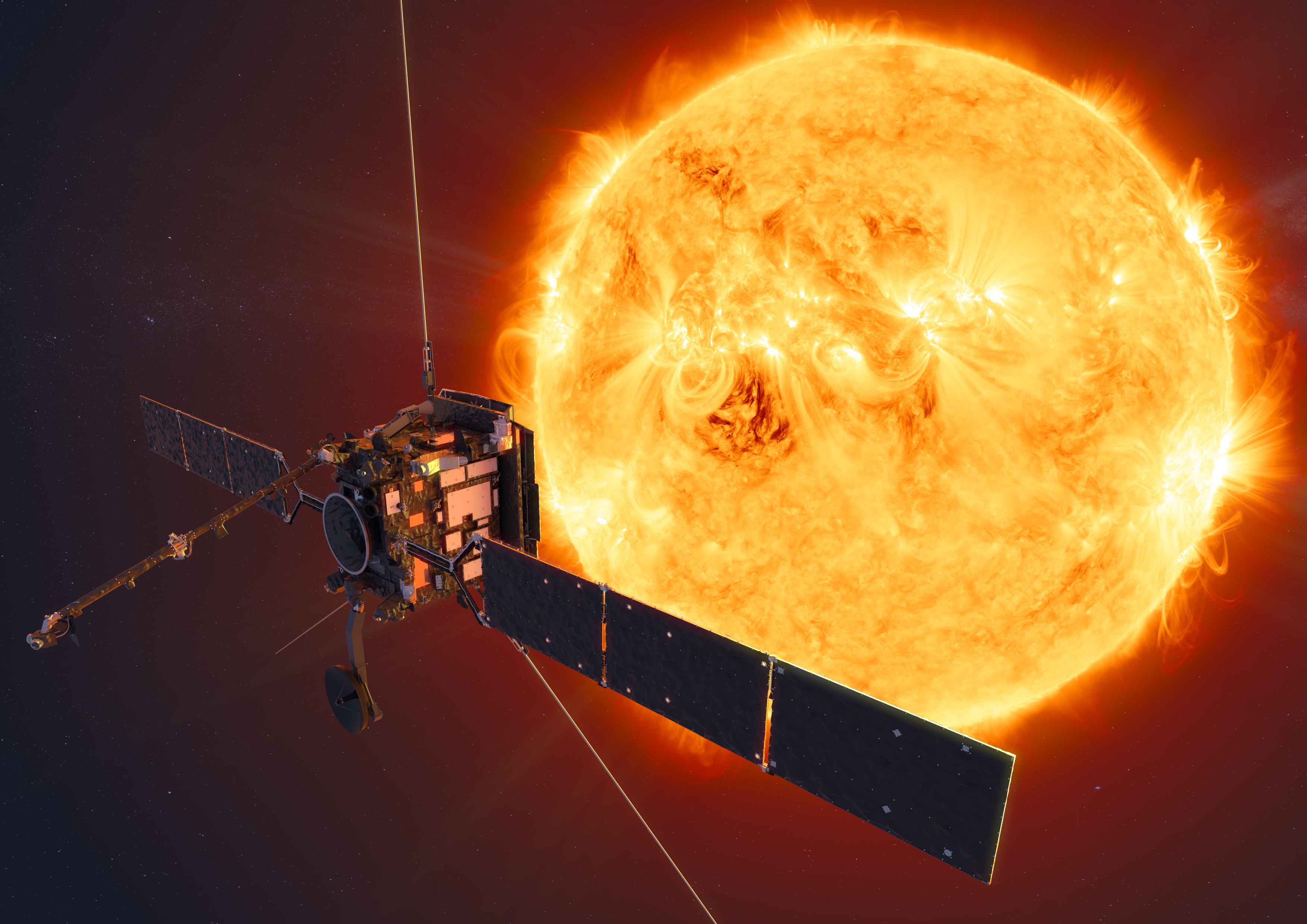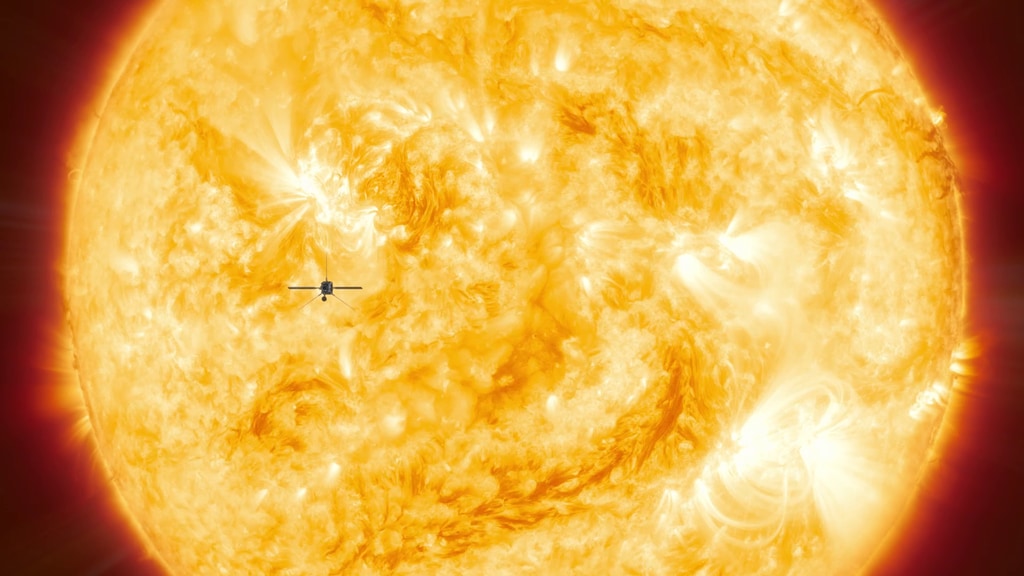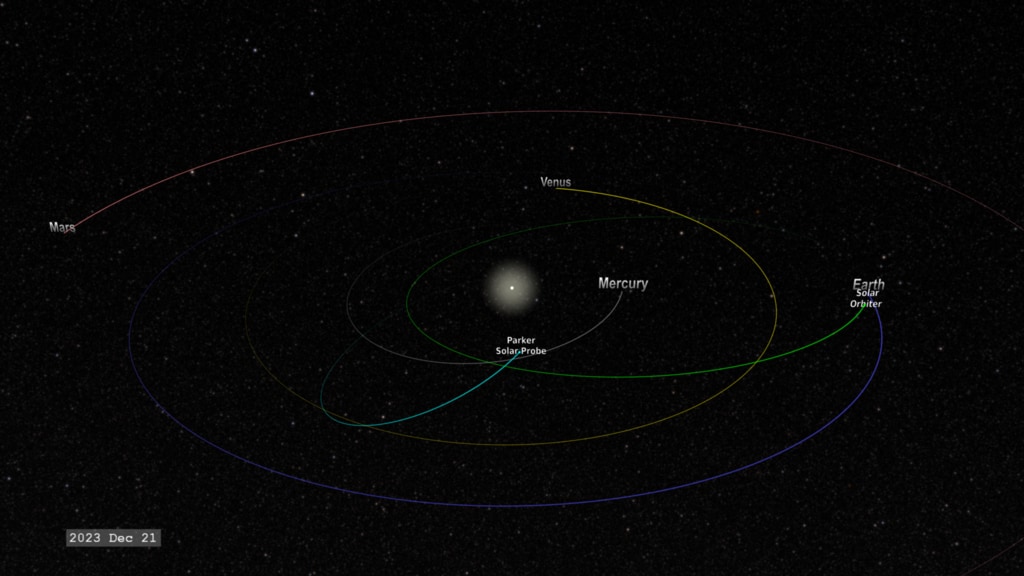Solar Orbiter Media Telecon
NASA and ESA scientists will present Solar Orbiter, the ESA/NASA collaboration soon to start its journey to the Sun, during a media teleconference on Monday, Jan. 27, 2020 at 2 p.m. EST.
Mission experts will discuss Solar Obiter’s uniquely tilted orbit, how the mission will capture the first images of the Sun’s North and South poles, and its ability to tackle major solar mysteries with its comprehensive suite of ten different instruments.
The teleconference audio will stream live at:
https://www.nasa.gov/live
Participants include:
• Nicola Fox, director of the Heliophysics Division in the Science Mission Directorate at NASA Headquarters in Washington
• Chris St. Cyr, former NASA project scientist for the mission at NASA Goddard
• Yannis Zouganelis, ESA deputy project scientist for Solar Orbiter at the European Space Astronomy Centre in Madrid, Spain
• Anne Pacros, ESA Mission and Payload Manager
Teleconference audio from January 27, 2020.

NASA’s fleet of heliophysics missions studies the Sun, its effects on Earth and the solar system and the nature of space itself.
Credit: NASA/Mary Pat Hrybyk-Keith
This image, captured in wavelengths of extreme ultraviolet light, shows a solar flare. Solar flares are intense bursts of light radiation caused by magnetic events on the Sun, and often associated with sunspots. The light radiation from solar flares can disturb part of Earth’s atmosphere where radio signals travel, causing short-lived problems with communications systems and GPS.
Credit: NASA/SDO
Parker Solar Probe and Solar Orbiter will study the Sun from unique vantage points during overlapping periods of time.
Credit: Johns Hopkins Applied Physics Lab
![[Artist’s impression] ESA's Solar Orbiter mission will face the Sun from within the orbit of Mercury at its closest approach. Credit: ESA/ATG medialab](/static/svs/images/no_preview_web_black.png)
[Artist’s impression] ESA's Solar Orbiter mission will face the Sun from within the orbit of Mercury at its closest approach.
Credit: ESA/ATG medialab
Solar Orbiter’s trajectory around the Sun will take it within the orbit of Mercury and allow the spacecraft to observe the Sun’s poles by inclining its orbit.
Credit: ESA/ATG medialab

Solar Orbiter’s unique perspective will give us the first clear view of the Sun’s surface near the poles. As seen here by NASA’s Solar Dynamics Observatory, measurements of the solar magnetic field — shown in black and white — are more difficult to distinguish near the edges of the Sun’s disk, limiting measurements of these regions. Solar Orbiter’s inclined orbit will give scientists the first clear measurements of the Sun’s surface at the poles, allowing measurements of the solar magnetic field and the granulation that hints at the Sun’s inner workings.
Credit: NASA/SDO

Solar Orbiter carries a comprehensive suite of ten instruments to study the Sun both remotely and in situ.
Credit: ESA/ATG medialab

Solar Orbiter in magnetic field simulation facility.
Credit: ESA–S. Corvaja

Solar Orbiter at ESA’s IABG facility Ottobrunn, Germany, before it departed for the US for launch.
Credit: ESA–S. Corvaja
Credits
Please give credit for this item to:
NASA's Goddard Space Flight Center
-
Scientists
- Nicola Fox (NASA)
- Yannis Zouganelis (ESA)
- Chris St. Cyr (NASA/GSFC)
- Anne Pacros (ESA)
-
Producers
- Sarah Frazier (SGT)
- Genna Duberstein (ADNET Systems, Inc.)
-
Technical support
- Aaron E. Lepsch (ADNET Systems, Inc.)
Release date
This page was originally published on Monday, January 27, 2020.
This page was last updated on Wednesday, May 3, 2023 at 1:45 PM EDT.


